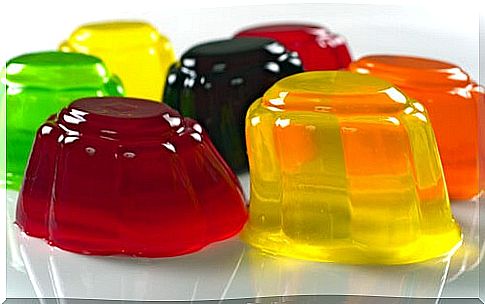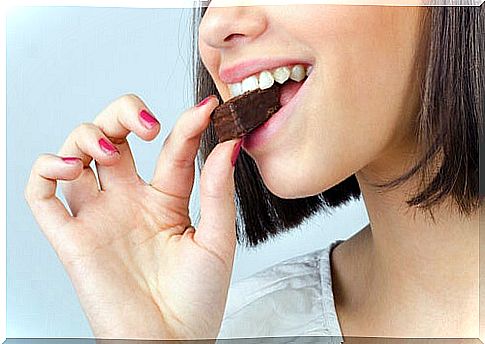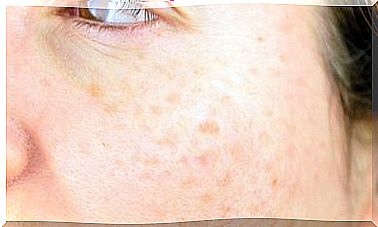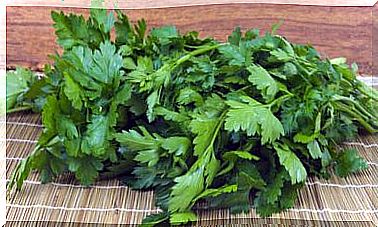The Brain Chooses Which Nutrients It Needs
When we have anxiety we eat anything. If we are depressed, we are likely to choose desserts and sweets. But did you know that the brain chooses what nutrients it needs? And it is not based on emotions!
A brain mechanism for choosing nutrients
Without a doubt, the mind is fascinating and amazes us every day. In this case we have to talk about a mechanism by which the brain leads us to feed ourselves according to our nutritional needs.
According to a study published in the journal Current Biology , living organisms eat according to their brain circuits. The well-known fruit fly ( Drosophila melanogaster ) was used for the research .
It was discovered that this insect chooses to eat between different fruits based on its nutritional needs, its sex and its sexual maturity.
The molecules that act in the brain of the fly detect that, for example, there is a lack of protein and, therefore, lead it to choose certain types of foods rich in protein.
This very particular mechanism, which works as if it were a sensor, helps us to understand the decision-making of other animals when choosing their food.
The researchers in charge of this experiment indicate, in turn, that they are working on the analysis of mosquitoes that transmit malaria to humans.
The theory indicates that these insects can “smell” the proteins and carbohydrates of the body and launch themselves to extract them through the blood.
What happens to people’s brains?

When we read about studies using animals, we believe that what happens in a mosquito or a mouse cannot be compared to humans.
While it is true that the brain of an insect can act differently from ours on certain issues, there are also other points on which we agree.
The National Geographic channel a few years ago aired a series called Brain Games. In its third season, an episode called “Brain Food” was specifically dedicated to demonstrating how the brain chooses what we eat.
To demonstrate this, some games or experiments are used. According to this program ” what you put in the stomach has nothing to do with the mouth but with the brain. “
During the episode you can see, for example, how advertising influences us and that many times we choose a product for its colors, for a poster we saw on the street or for the catchy song that was used to promote it.
This also makes us eat when we don’t have an appetite and we are one of the only animal species that ingests much more than it needs every day. The human brain is continually tricked into choosing food through various strategies.
1. Small plates

When faced with two plates with the same amount of food, but smaller containers, the mind will be inclined towards the one that seems to offer a fuller plate, which will be the smallest. This, for example, is recommended in dieters to create the impression that they are ingesting more.
2. Eye-catching packaging
The colors and patterns of the packages on the market are intended to attract attention.
The two tones that most predominate in the shop windows are red and yellow (which also activate the hunger signal in the mind). Green is related to low calorie things or natural products. Another issue that we must take into account is the use of certain fonts:
- If it resembles the handwritten letter, we will think that it is a homemade food.
- As for the images, if there is a field, a sun or a happy family, we will associate the product with natural, nutritious or beneficial.
3. Colorants

Visual impact is very important when choosing food. This is one of the reasons why manufacturers add colorants to their products.
Their goal is to make them appear as attractive and real as possible to the consumer’s brain. For example, yogurts use a coloring based on the fruit they are supposed to be made from.
4. Appearance
In the documentary, a game was played where people were offered brownies that were shaped like dog excrement. Of course, no one wanted to accept the present. This is because the brain avoids consuming what it considers negative or can make us feel bad.
5. Reward

Finally, we must talk about how we feel after consuming certain foods. For example, if we are sad and eat candy, we are likely to experience a cozy feeling.
The mind has a hormonal mechanism (through dopamine and serotonin) that is activated by consuming fats or sugars and that gives us as much pleasure and enjoyment as any other stimulating activity.









